Introduction
Always On Availability Groups (AG) is a high-availability and disaster recovery (HADR) solution in Microsoft SQL Server. It ensures database protection by replicating data across multiple SQL Server instances, providing failover capabilities, and maintaining continuous availability. This feature is ideal for mission-critical applications that require minimal downtime and seamless recovery.
Breakdown of the architecture and main components of Always On Availability Groups:
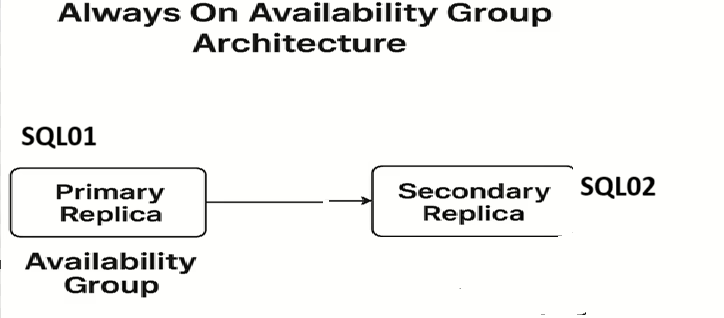
Understanding the Architecture of Always On Availability Groups
The architecture of Always On AG consists of multiple SQL Server instances (replicas) working together to ensure database availability and disaster recovery. These replicas can be hosted on physical or virtual servers and are typically spread across different locations to prevent data loss.
Key Components of Always On Availability Groups
1. Primary Replica
- The primary replica is the main SQL Server instance where read-write operations occur.
- It is responsible for sending transaction log changes to secondary replicas.
- Applications and users connect to the primary replica for real-time data access.
2. Secondary Replicas
- Secondary replicas store a read-only or read-write copy of the database, depending on configuration.
- Used for disaster recovery and offloading reporting workloads.
- Replication is achieved via log-based synchronization from the primary replica.
- Can be in different geographical locations for enhanced protection.
3. Availability Databases
- These are the actual databases that are replicated within an Availability Group.
- To be part of AG, a database must use the full recovery model.
- Databases are synchronized using:
- Synchronous commit mode (ensuring real-time data replication without loss).
- Asynchronous commit mode (allowing data lag for disaster recovery scenarios).
4. Failover Mechanism
- Automatic Failover: If the primary replica fails, a synchronized secondary replica takes over immediately. Occurs without administrator intervention.
- Manual Failover: An SQL administrator manually switches roles between replicas.
- Forced Failover: Used in critical scenarios where automatic failover is not configured.
Below screenshot shows a SQL Server Always On Availability Group with automatic failover enabled:
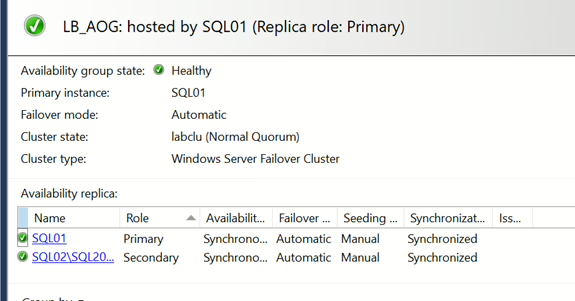
Key Observations from the above Screenshot.
- Primary Replica: SQL01 (Active)
- Secondary Replica: SQL02 (Standby)
- Availability Group State: Healthy
- Failover Mode: Automatic
- Synchronization Mode: Synchronous Commit
5. Listener
- A virtual network name (VNN) that provides a single connection point for applications.
- Automatically directs traffic to the current primary replica after failover.
6. Availability Groups & Failover
- An Availability Group consists of one primary and one or more secondary replicas.
- Failover is automatically handled based on configured policies.
Key Components of Always On Availability Groups
1. Replicas
- Primary Replica: The main SQL Server instance where live database updates occur.
- Secondary Replicas: Copies of the primary database used for read-only access, disaster recovery, or failover.
2. Availability Databases
- The actual databases that participate in the Availability Group.
- Replicated across all secondary replicas to maintain up-to-date copies.
3. Listener
- Acts as a virtual endpoint for client applications.
- Ensures uninterrupted connectivity during failover transitions.
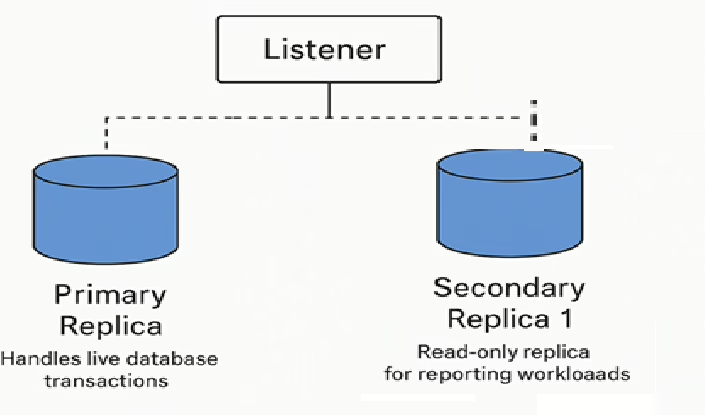
4. Synchronization Modes
- Synchronous Commit Mode: Ensures transaction durability by committing changes to both primary and secondary replicas at the same time.
- Asynchronous Commit Mode: Transactions are first committed on the primary replica, then asynchronously replicated to secondary replicas.
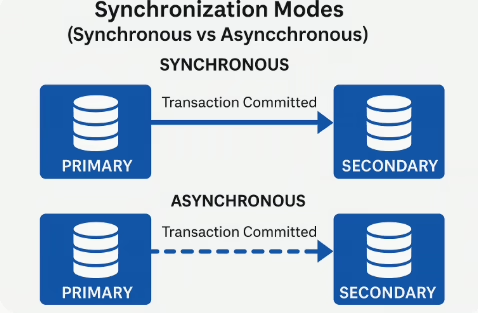
- Synchronous Commit Mode
- The primary replica waits for the secondary replica to acknowledge that the transaction is committed before it confirms the transaction to the application.
- Ensures zero data loss because both replicas are always in sync.
- Slower compared to asynchronous mode because it waits for the secondary replica before committing.
- Asynchronous Commit Mode
- The primary replica does not wait for the secondary replica to acknowledge the transaction.
- The transaction is committed on the primary replica first, and the secondary replica receives the update later.
- Risk of data loss if the primary fails before the secondary catches up.
- Faster performance since the transaction doesn’t wait for replication.
5. Data Synchronization
- SQL Server uses log-based replication to transfer data changes from primary to secondary replicas.
- Changes (INSERT, UPDATE, DELETE) are logged and applied to secondary replicas to maintain consistency.
6. Health Detection
- SQL Server continuously monitors the health of Availability Groups.
- If an issue is detected, it triggers an automatic or manual failover.
7. Backup Preferences
- Administrators can configure backup preferences to distribute backup workloads between replicas.
- Typically, backups are offloaded to secondary replicas to reduce load on the primary.
How the Topology of Always On AG works.
- Primary Replica: Handles live database transactions.
- Secondary Replica 1: Read-only replica for reporting workloads.
- Secondary Replica 2: Disaster recovery replica in a remote location.
- Listener: Routes client connections to the active primary replica.
Benefits of Always On Availability Groups
- High Availability: Ensures minimal downtime by quickly switching to a secondary replica if something goes wrong.
- Disaster Recovery: Supports geographically distributed replicas for business continuity.
- Load Balancing: Offloads read-only queries to secondary replicas.
- No Shared Storage Required: Unlike traditional failover clustering, Always On AG does not rely on shared storage, making it more flexible.
Conclusion
Always On Availability Groups provide a robust, enterprise-grade solution for SQL Server high availability and disaster recovery. By leveraging replication, failover mechanisms, and load balancing, organizations can ensure data availability and continuity with minimal downtime. Whether for mission-critical applications or large-scale database infrastructures, Always On AG is a powerful tool for maintaining resilience in SQL Server environments.
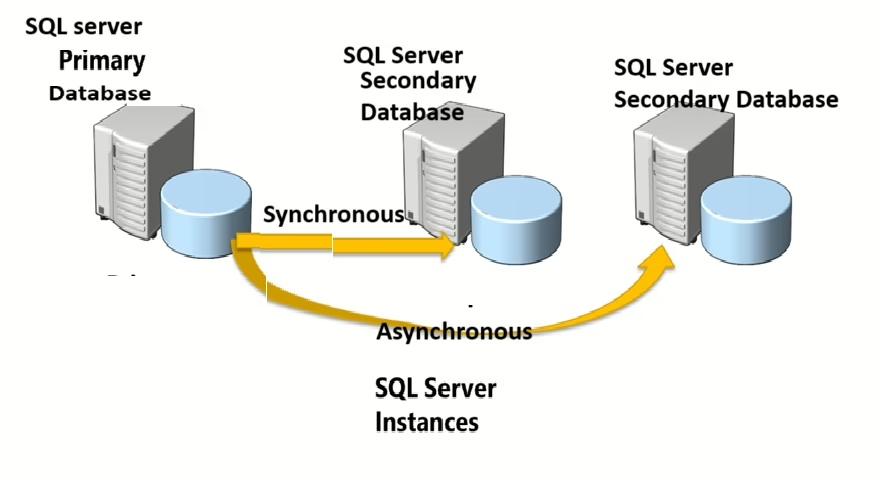
Very good write-up. I certainly appreciate this website. Keep it up!